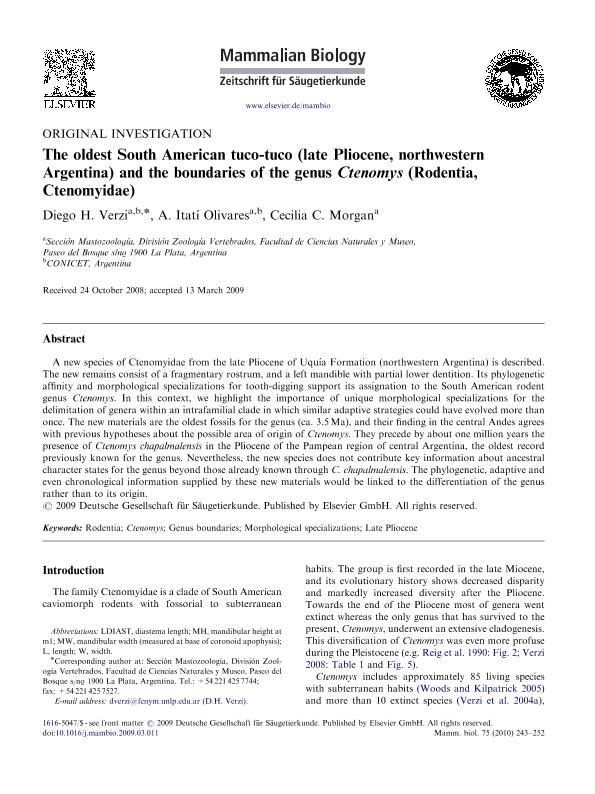Artículo
The oldest South American tuco-tuco (late Pliocene, northwestern Argentina) and the boundaries of the genus Ctenomys (Rodentia, Ctenomyidae)
Fecha de publicación:
05/2010
Editorial:
Elsevier Gmbh
Revista:
Mammalian Biology
ISSN:
1616-5047
Idioma:
Inglés
Tipo de recurso:
Artículo publicado
Clasificación temática:
Resumen
A new species of Ctenomyidae from the late Pliocene of Uquía Formation (northwestern Argentina) is described. The new remains consist of a fragmentary rostrum, and a left mandible with partial lower dentition. Its phylogenetic affinity and morphological specializations for tooth-digging support its assignation to the South American rodent genus Ctenomys. In this context, we highlight the importance of unique morphological specializations for the delimitation of genera within an intrafamilial clade in which similar adaptive strategies could have evolved more than once. The new materials are the oldest fossils for the genus (ca. 3.5 Ma), and their finding in the central Andes agrees with previous hypotheses about the possible area of origin of Ctenomys. They precede by about one million years the presence of Ctenomys chapalmalensis in the Pliocene of the Pampean region of central Argentina, the oldest record previously known for the genus. Nevertheless, the new species does not contribute key information about ancestral character states for the genus beyond those already known through C. chapalmalensis. The phylogenetic, adaptive and even chronological information supplied by these new materials would be linked to the differentiation of the genus rather than to its origin. © 2009 Deutsche Gesellschaft für Säugetierkunde.
Archivos asociados
Licencia
Identificadores
Colecciones
Articulos(CCT - LA PLATA)
Articulos de CTRO.CIENTIFICO TECNOL.CONICET - LA PLATA
Articulos de CTRO.CIENTIFICO TECNOL.CONICET - LA PLATA
Citación
Verzi, Diego Hector; Olivares, Adriana Itati; Morgan, Cecilia Clara; The oldest South American tuco-tuco (late Pliocene, northwestern Argentina) and the boundaries of the genus Ctenomys (Rodentia, Ctenomyidae); Elsevier Gmbh; Mammalian Biology; 75; 3; 5-2010; 243-252
Compartir
Altmétricas




